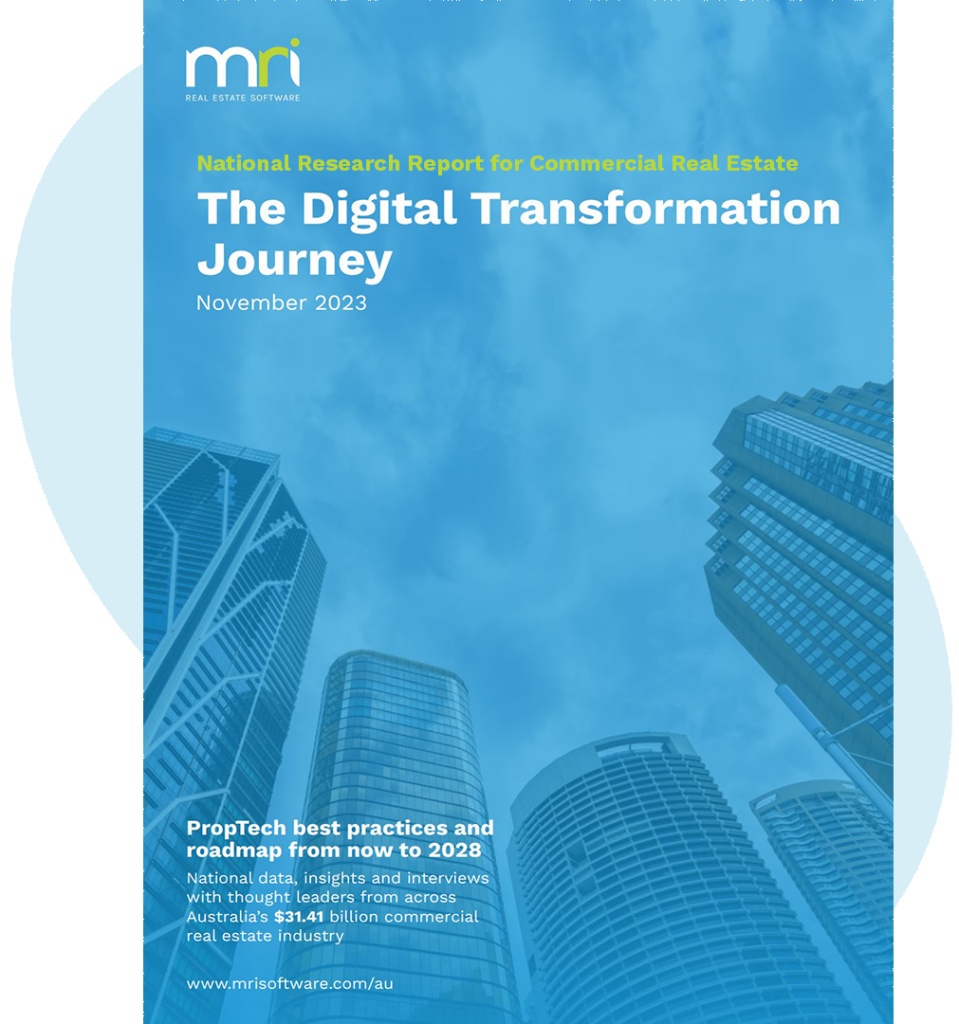Voices of Digital Transformation: Expert Insights Series
Ramesh Narayanan, Head of Digital, QIC Real Estate
Our expert insights series is based on outreach conducted by MRI Software for its national research report for the commercial property sector – Voices of Digital Transformation Report.
About QIC Real Estate
QIC Real Estate is a specialist division of QIC, one of the world’s leading diversified alternative investment firms. The business drives sustainable investment performance through active management of an AUD$22bn portfolio, comprising more than 40 mixed-use retail and commercial assets across Australia and internationally.
We spoke to Ramesh Narayanan, QIC Real Estate’s Head of Digital about how the business approaches the implementation of new solutions, manages buy-in and measures the success of its technology projects.
The Digital Transformation Journey
PropTech best practices for commercial real estate from now to 2028.
Get the report
Navigating business challenges
According to Ramesh, there’s a common tendency among property businesses to overlook the crucial step of defining clear business requirements before diving head first into technology deployment.
He says that technology’s “shiny object syndrome” tends to take precedence over a thorough understanding of the business’s actual needs.
So often, people get very excited by tech as opposed to being really clear on what the business requires. We rush to adopt a solution without being clear on how we’re going to embed the process and technology into the business. Staying focused on value is a persistent challenge.
– Ramesh Narayanan, QIC.
Implementing new solutions
There are several parts or pillars of a successful implementation project, according to Ramesh.
“The first step involves defining requirements, initiating the tender process, and evaluating available solutions.” To do this, QIC has a business case template that effectively involves setting out the requirements for new technology in plain English.
“We avoid jargon and just try and express in everyday terms what we’re trying to achieve, and what the perceived benefits are. The business case might get refined as things progress, but if you’re not clear on what the benefits are going to be and how you’re going to achieve them, it won’t get up,” he adds.
“From there it goes through a a digital governance group chaired by our MD for final approval.”
The second part is the actual implementation, which is often the straightforward part. The third pillar, however, requires figuring out how to integrate the new technology into the business. This is the tough part where you need to address change management, communication strategies, and how to embed it into operational teams.”
“The final pillar is focused on ensuring ongoing support, maintenance, and management, not just of the system but also of the data and related elements.”
Managing change and measuring success
Ramesh says you need to “pass the baton” around and make sure that people are like clear on their respective roles in an implementation.
We use a typical RACI model to work out who of the team is responsible, accountable, consulted and informed, otherwise you risk trying to get buy in after the technology has been deployed, at which point it’s often too late.
– Ramesh Narayanan, QIC Real Estate.
“Again, this comes back to defining the requirements at the outset, because that will make it more likely that you’ll get get buy-in and work out how to actually get the people that will be using the product on board and understand what they’ll need from it,” he adds.
“It seems like common sense, but I don’t think most people do it,” Ramesh says. “And the obvious and unfortunate reaction you will get when handing over to an operations or finance team late in the process is that you should have spoken to them from the start.”
Ramesh says that being able to get a clear measure of success is crucial. “Transparency around the expected results and the ability to break down ROI are important when measuring the impact of a given solution. If it’s being claimed that operational efficiencies will save us a lot of money, we need to be able to identify which resources will be actually be freed up. Equally important is having the finance systems in place that can actually track ROI and business benefits effectively.”
Dealing with data security
Ramesh says that the industry has had to shape its own distinctive approach to cybersecurity.
When I joined the team at QIC, I initiated the development of cybersecurity standards specifically tailored for property, which differ from typical enterprise tech standards. In real estate, where we implement systems like BMS and various other specific tech for assets, our approach needs to be a little different.
– Ramesh Narayanan, QIC Real Estate.
“We aim to ensure that, before any technology is implemented, it complies with our basic cybersecurity standards, which cover essentials like patching and antivirus measures. We address these before delving into the business case,” Ramesh adds.
“Moving forward, we’re working on integrating our cybersecurity teams more closely into the process, ensuring they have a higher level of involvement from the early stages.”
Lessons and best practices
“First and foremost, it’s crucial to recognise that commercial and technical teams should not operate in isolation,” Ramesh says. “Any technology implementation has to connect clearly with commercial objectives.”
“This alignment should be a fundamental principle whenever introducing new digital solutions. It’s never just about the technology itself.”
He adds that having been involved in the proptech space since before it was called “proptech”, he’s observed his fair share of hype. “In industry groups I meet with, the emphasis is on staying focused on real value while facing the continuous influx of new tech solutions. As tempting as they may be, keeping a steady eye on our overall goals is essential.”
Proptech trends to watch
“The obvious trends we’re seeing revolve around generative AI, which is actually transforming how we handle tasks internally at QIC,” Ramesh says. “We’re part of Microsoft’s Copilot trial, and it’s already streamlined the way we handle a lot of routine tasks.”
“Another trend relates to building management and refinements in data strategy, which will make properties run more efficiently,” he says. “Having data analytics automatically figure out why a light is on in your comms room at midnight, for example. We’re already starting to delve into that territory, and it’s bound to be a game changer. I’d say that’s the big emerging trend to watch.”
Download a copy of the Voices of Digital Transformation Report here and learn more about how Australian real estate businesses are embracing proptech best practices to help achieve strategic goals.
Digital Transformation and Proptech Best Practices
Like most industries, the commercial real estate sector is going through a rapid digital transformation. To better understand what specific challenges technology is now tasked with solving, we conducted an in-depth survey with over 100 leading commer…


